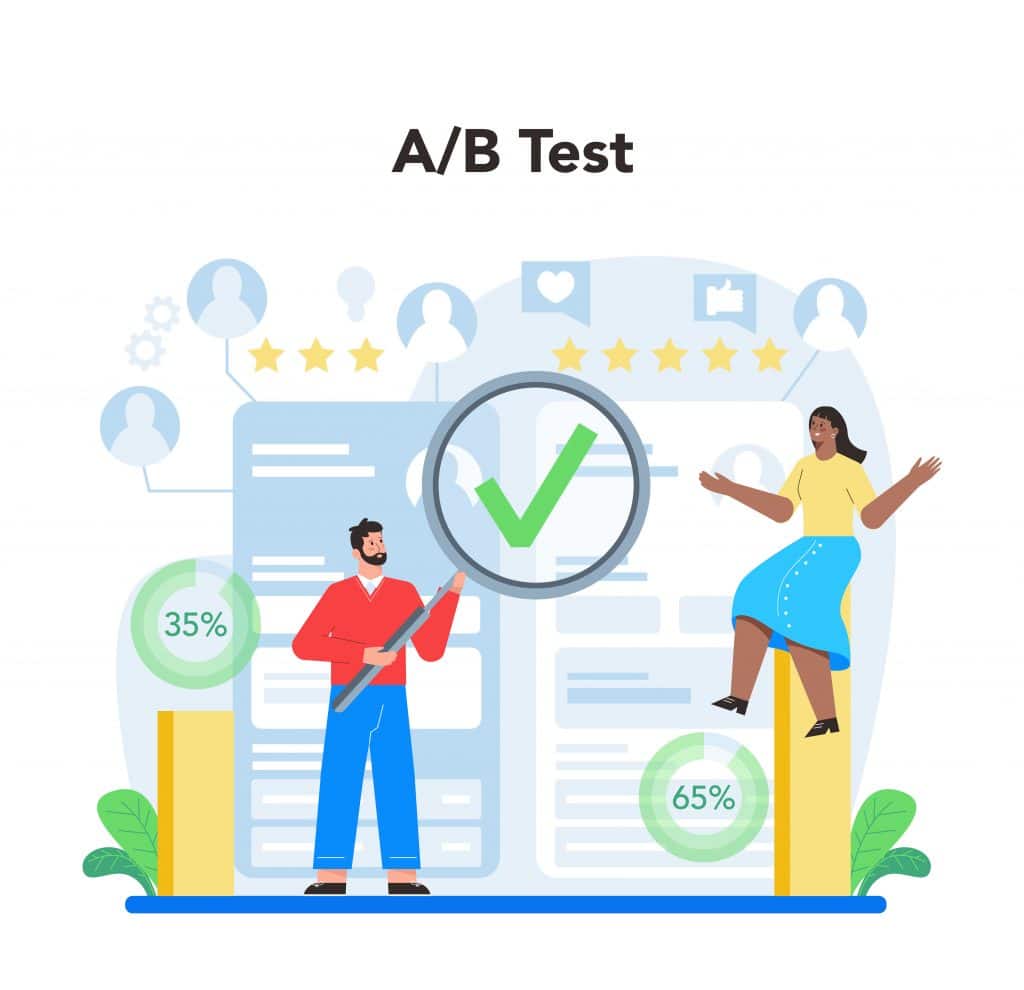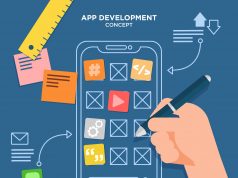In the ever-evolving landscape of digital experiences, User-Centered Design (UCD) stands as a beacon of innovation. USA-based UX designers have been at the forefront of this transformative approach, reshaping how we interact with technology. Through empathy-driven methodologies, they prioritize user needs, preferences, and pain points to craft seamless and meaningful experiences. This blog delves into the success stories of USA UX designers who have mastered the art of UCD, elevating their designs and setting new industry standards.
What is User-Centered Design (UCD)?
User-centered design (UCD) is a human-centric approach to product and interface design that prioritizes the needs, preferences, and behaviors of the end-users. It’s a philosophy and methodology that places the user at the center of the design process, ensuring that the final product is intuitive, efficient, and enjoyable to use.
Why User-Centered Design (UCD) is of paramount importance
User-Centered Design (UCD) is pivotal in modern design and development for several compelling reasons. Firstly, it places a profound emphasis on enhancing user satisfaction. By tailoring products and experiences to users’ specific needs and preferences, UCD cultivates higher levels of user contentment. Moreover, it leads to improved usability, ensuring that interactions with products are intuitive and frustration-free, thus increasing adoption rates.
Additionally, UCD fosters higher user engagement, as users tend to be more involved with products that align with their requirements. This engagement often translates to greater user retention and brand loyalty. Cost efficiency is another crucial aspect, with UCD enabling the early detection and rectification of usability issues, reducing the need for resource-intensive post-development revisions.
Furthermore, UCD champions inclusivity and accessibility, ensuring that digital solutions cater to a diverse user base, including individuals with disabilities. This ethical design approach broadens the audience and aligns with modern societal values. It also provides a competitive edge, as products prioritizing UCD tend to outshine rivals by offering superior user experiences, ultimately attracting more users.
Finally, UCD promotes iterative improvement based on user feedback and evolving needs. This adaptability allows products to remain relevant, even in dynamic market conditions. In essence, UCD is the cornerstone of delivering user-centric products and experiences that not only meet user expectations but also drive business success and innovation in today’s competitive landscape.
Explore the remarkable journey and impact of the USA’s top UI designers, Don’t miss our in-depth article on A Closer Look at the USA’s Top 10 UI Designers: Their Journey and Impact.
Let’s explore each facet of User-Centered Design (UCD)
Understanding Users:
To truly create designs that resonate with users, designers must delve into user research. This entails various methods like surveys, interviews, and direct observations. It’s essential to identify user behaviors, motivations, pain points, and goals comprehensively.User Personas:
Once the research phase is complete, designers create user personas. These are fictional but detailed representations of various user groups, complete with names, backgrounds, and even photographs. Personas enable designers to empathize with users by providing a clear understanding of their needs and preferences.Iterative Design:
UCD thrives on iteration. Designers begin by crafting low-fidelity prototypes like paper sketches or wireframes. These basic versions of the product are used in initial user testing to gather feedback. As the design evolves, high-fidelity prototypes and interactive mockups are created for further testing and refinement.User Involvement:
Direct user involvement is a hallmark of UCD. Usability testing sessions are conducted regularly, where users interact with the product while designers observe their actions and gather feedback. This user-centric approach ensures that design decisions are grounded in real user experiences.Agile Methodology:
Many UCD projects adopt Agile methodologies. Agile allows for incremental development with a focus on user feedback. Development occurs in short cycles, called sprints, enabling rapid adjustments based on user insights.Heuristic Evaluation:
This involves applying established usability heuristics or principles to evaluate the design. Designers assess the interface against recognized best practices, identifying areas where it aligns well and where improvements are needed.A/B Testing:
A/B testing is a method for comparing two or more design variations to determine which performs better in terms of user engagement and satisfaction. It’s a data-driven approach to refine the design.
Accessibility:
Ensuring accessibility is a critical aspect of UCD. Designers strive to make products usable by individuals with disabilities, following the guidelines laid out in the Web Content Accessibility Guidelines (WCAG). This includes considerations for visual and auditory impairments, among others.Consistency:
Consistency in design is maintained by creating design pattern libraries or style guides. These documents outline the design elements’ rules, such as button styles, typography choices, and color schemes, ensuring a unified and polished appearance.User Flow:
UCD ensures that user flows and navigation are logical and consistent throughout the product. Users should be able to intuitively navigate the interface, reducing confusion and frustration.
The UCD Process:
Research:
In the initial stages of User-Centered Design (UCD), conducting one-on-one user interviews is crucial. These interviews delve deep into understanding user needs and preferences, providing invaluable insights that shape the design process. Additionally, an essential component of UCD involves a comprehensive analysis of competitors’ products. By studying competitors, designers can identify strengths and weaknesses, gaining opportunities to differentiate their products and create a more user-centric solution.Design:
Within the realm of User-Centered Design (UCD), two vital steps stand out: wireframing and interactive prototyping. Wireframing serves as the blueprint, laying out the fundamental structure and layout of the product. It’s the skeletal framework upon which the user interface is built, ensuring that the design aligns with user needs. Going a step further, interactive prototyping breathes life into the concept. It allows users to simulate the experience of using the product, offering a tangible feel of its functionality. These interactive prototypes serve as dynamic models for refining the design based on user feedback, a pivotal aspect of UCD’s iterative process.Testing:
Usability testing is a crucial phase in User-Centered Design (UCD) and can take two primary forms: moderated and remote usability testing. In moderated usability testing, designers closely observe users as they interact with the product. This method involves asking participants to think aloud, sharing their thoughts and reactions in real time. This provides invaluable insights into their decision-making processes and any usability issues they encounter.Refinement:
In the iterative process of User-Centered Design (UCD), two key activities stand out: affinity diagramming and prioritization. Affinity diagramming is the art of organizing and synthesizing user feedback. This method involves gathering insights from user interactions and feedback sessions, and then categorizing them into common themes and issues using visual diagrams. This process unveils valuable patterns that guide design improvements.Implementation:
In the User-Centered Design (UCD) process, close collaboration with developers is fundamental. This partnership ensures the precise execution of meticulously crafted designs, translating the envisioned user experience into the final product. Simultaneously, User Acceptance Testing (UAT) stands as the ultimate litmus test, where users engage with the product to validate its alignment with their expectations. UAT not only confirms that the design meets their needs but also uncovers any unforeseen issues, emphasizing the user-centric nature of UCD. This iterative approach, driven by user feedback, guarantees that the end result is a user-approved masterpiece.Post-launch Evaluation:
In the post-launch phase of a User-Centered Design (UCD) journey, data-driven insights and user feedback become the compass for continuous improvement. Analytics tools serve as invaluable assets, allowing meticulous tracking of user behavior within the product. These insights shed light on how users interact, where bottlenecks may occur, and where enhancements are warranted. Simultaneously, accessible user feedback channels are established, ensuring users have a direct line to voice their opinions, report issues, and suggest improvements. This dual approach, combining quantitative data with qualitative user input, empowers designers and developers to fine-tune the product iteratively, maintaining its user-centric ethos and perpetually enhancing the user experience.
Success stories of UX designers in the USA
User experience (UX) design is the process of designing products and services that are easy to use and enjoyable for the people who use them. UX designers focus on the user’s needs and wants, and they use a variety of methods to understand those needs, such as user research, surveys, and usability testing.
There are many success stories of UX designers in the USA. Here are a few examples,
GeekyAnts:
GeekyAnts is a leading USA company that provides UI/UX design services to businesses of all sizes. The company has a strong focus on collaborative design, and it works with clients to understand their needs and to create user-friendly and innovative products and services. GeekyAnts has a team of experienced designers who are skilled in a variety of design tools and techniques. The company also has a strong track record of delivering successful design projects.Netflix:
Netflix is a streaming service that uses UX design to personalize the user experience. The company collects data on what users watch and then uses that data to recommend other shows and movies that they might like. This has helped Netflix to become one of the most popular streaming services in the world.Amazon:
Amazon is an e-commerce company that also uses UX design to improve the user experience. The company collects data on what users buy and then uses that data to recommend other products that they might be interested in. This has helped Amazon to become one of the most successful e-commerce companies in the world.Spotify:
Spotify is a music streaming service that uses UX design to create a personalized listening experience. The company collects data on what users listen to and then uses that data to create playlists that are tailored to their individual tastes. This has helped Spotify to become one of the most popular music streaming services in the world.Google:
Google is a search engine that uses UX design to make it easy for users to find the information they need. The company collects data on what users search for and then uses that data to improve the search algorithm. This has helped Google to become the most popular search engine in the world.Apple:
Apple is a technology company that uses UX design to design products that are easy to use and intuitive. The company conducts extensive user research to understand the needs of its users and then uses that research to inform the design of its products. This has helped Apple to become one of the most successful technology companies in the world.
These are just a few examples of the many success stories of UX designers in the USA. UX design is a powerful tool that can be used to create products and services that are loved by users and that will help businesses achieve their goals.

Conclusion
In conclusion, User-Centered Design (UCD) stands as the cornerstone of exceptional digital experiences, and the success stories from USA-based UX designers reaffirm its paramount importance. By placing users at the heart of the design process, conducting thorough research, embracing iterative development, and continually seeking user input, these designers exemplify the transformative impact of a user-centric approach. Their dedication to empathy, inclusivity, and accessibility paves the way for inclusive, efficient, and aesthetically pleasing products. As UCD continues to evolve, it is clear that its principles will remain at the forefront of innovative design, ensuring that digital experiences are not only functional but also delightful for users across the United States and beyond.


















